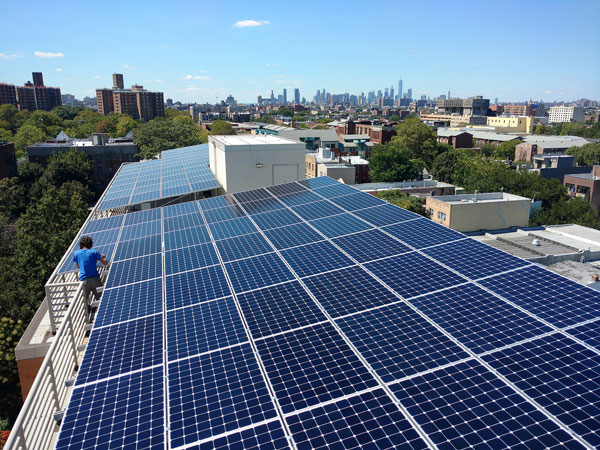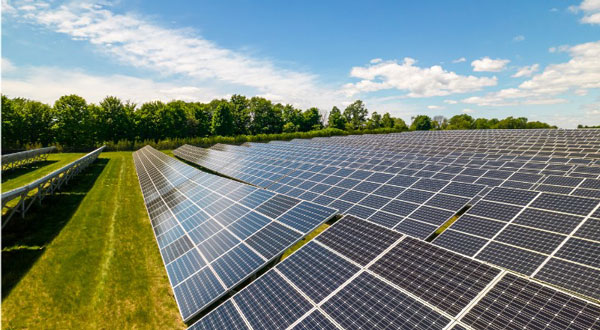Assessing Roof Suitability
One of the essential things to consider if you are planning to switch on solar power is your roof. Roof orientation, type, age and condition are also important. The an area facing south has the most sunlight in the northern hemisphere. This orientation can improve the efficiency of solar panels by large factors, as they often receive sunlight throughout most of the day.
Roof Material and Condition
Installation and performance of solar panels can also be more difficult because of the different materials used for roofing. Metal roofs with standing seams, for instance, provide an uncomplicated system to fasten solar panels, which can help reduce roof installation costs. Slate and tile roofs, on the other hand, typically require more specialized mounts and must be handled with greater care, so the cost of installing these mounts might be slightly higher.
Shading and Surroundings
You must assess the shading on your roof during the day. Even the smallest of shading can dramatically decrease a solar array's energy production capabilities. Another study found that even shading only 10 percent of the surface of a panel from a tree or a neighboring building can slash output in half.
Roof Size and Layout
The amount of roof space will determine the total number of solar panels that can be fitted. The two have an inverse relationship - the more panels, the more energy you can produce but the more space you need. The addition of chimneys, vents, and the roof pitch must be accounted for in an optimum layout. A 30-degree roof pitch will be suitable for solar installations in many areas.
Local Climate & Environments
Local weather conditions also play an important part. While the better they are placed in regions that receive lots of sunlight - solar panels can work just fine in less sunny spots. For instance, Germany are the world leader for solar power capacity but it has quite low exposure to sunlight (and not much wind either) showing that climatic factors aren't the only determinant of efficiency.

Understanding Local Weather Patterns
Local climatic features are definitely of critical importance when it comes to deciding whether solar energy use makes sense. These patterns can have a major influence on the efficiency of solar panel installations. Solar power makes the most sense in areas of high annual sunshine hours, but that doesn't eliminate significant benefits for lower-sunshine regions.
Minutes Per Day and Intensity of Sunshine
The largest determining factor is going to be how much direct sun your area will receive each year. In the U.S., states like Arizona and California are famous because of their high solar irradiance levels higher than 5.5 kWh/m² per day. This high profile ensures that the solar panels are able to absorb as much sunlight as possible, therefore outputting so well.
Seasonal Variations
Areas with distinct seasons will see a varying performance from their solar power systems. The length of winter days and the angle of the sun means solar panels receive less sunlight than at other times in the year. In Boston you get about 6 kWh/m² per day of solar radiation on a typical July day and less than 3 kWh/m² per day in December.
Weather Related Consideration
Fog, snow and frequent cloud cover are also contributors to solar panel efficiency. The amount of snow on the panels (heavier in some areas, especially northern states) could block sunlight and reduce production. These problems can be alleviated by using technologies such as automated snow sensors for snow removal, as well as panel coatings, which increase light absorption in cloudy weather.
Evaluating Energy Needs
Assess Your Solar Energy Needs Properly A solar energy transition will create the significant issue of sun energy. Through this assessment makes the targeted solar power system to determine that it is capable enough to prevent waste and inadequacies in your consumption.
Energy Consumption of Today and Tomorrow
The first step to learning how much energy you currently use is to look at your most recent energy bills that you have received and find the amount of kilowatt-hours (kWh) you typically use every month. In fact, the average American household uses about 877 kWh per month. If the idea is to use more, such as getting an electric vehicle or running even more appliances, you should consider this.
Energy Efficiency Measures
Avoid energy use savings before installing the item Modern LED lighting, efficient appliances and better insulation reduce this demand and the size (and cost) of the solar system required.
Detailed Load Analysis
Analyze your load in other to know how energy is being used and at what time of the day. This is an essential stepto design a system that matches your energy usage. If your maximum usage happens in evening hours without high solar production think about solar batteries to store energy.
Impact of Net Metering
You should also know what kind of net metering policies are in place near you. Net metering also influences how much excess power you can sell back to the grid and could affect the size and cost-effectiveness of your system. If you are in a state that has net metering rules that effectively turn back the clock, you may be able to safely size your system at higher demand levels if you can sell back all of the excess electricity.
Checking Local Regulations
Understanding Local Solar Panel Installation Regulations These regulations vary greatly by location and can impact everything from the size ad placement of solar panels to financial incentives available.
Zoning and zoning laws
Local zoning laws and building codes may place specific requirements or restrictions on solar installations. In some areas, there could be height limits in place that would impact where and how panels can be installed or make it required to obtain special permits if the installation is in a historic district.
Permit Requirements
Solar installations usually require a variety of permits from local building departments. The process may require electrical and building permits to ensure the build meets the safety standards in your area. In California, solar installations are required to comply with the California Electrical Code that includes special photovoltaic circuitry requirements.
HOA and Community Guidelines
Additional rules may apply to those living within a homeowners' association. Many HOAs have solar panel aesthetics rules - these can range from restrictions on how panels are oriented to location, or all the way up to certain types of solar panels that look like roofing materials.
State and Federal Incentives
Knowledge of the state and federal incentives available could also be seen under local regulations. Incentives to switch Many regions offer tax rebates or credits to help you go solar. The Investment Tax Credit (ITC) enables a 26 percent offset of a solar energy system's installation costs as a federal tax deduction.

Considering Installation Costs
It is important to grasp outlays of laying solar panels when considering whether shifting to solar energy use and the value it brings your way. Costs are influenced by simple factors like the size of the system, panel types, and installation complexity.
Breakdown of Costs
The total installation costs of solar systems are the sum of several constituents. Solar panels as a component cost 25% -30% of the total. Other costs would be inverters, mounting hardware, wiring, etc., which vary by the complexity of your roof layout and how you lay out your overall system.
Cost Per Watt
Cost per watt of installed solar capacity is a common metric used when comparing the cost-effectiveness of different solar installations. In contrast, U.S. data showed the average cost per watt currently $2.49 to $3.56 . This unit allows homeowners and businesses to more easily compare quotes from different installers.
Incentives and Rebates
Solar installations involve higher upfront costs, but federal, state and local incentives can bring those costs down. Specifically, the federal solar tax credit lets you subtract 26% of the price of a solar energy system on your federal taxes with no roof. On top of that, most states offer their own rebates and tax incentives that an cut costs even more.
Long-term Savings Analysis
It may be expensive to install up front, but over time the resulting savings on energy bills also need to be adding into the total cost of ownership calculations. The payback time for a residential system will be between 7-8 years, due to the savings on energy costs. A technological metamorphosis may increase their life-years beyond that mark.





